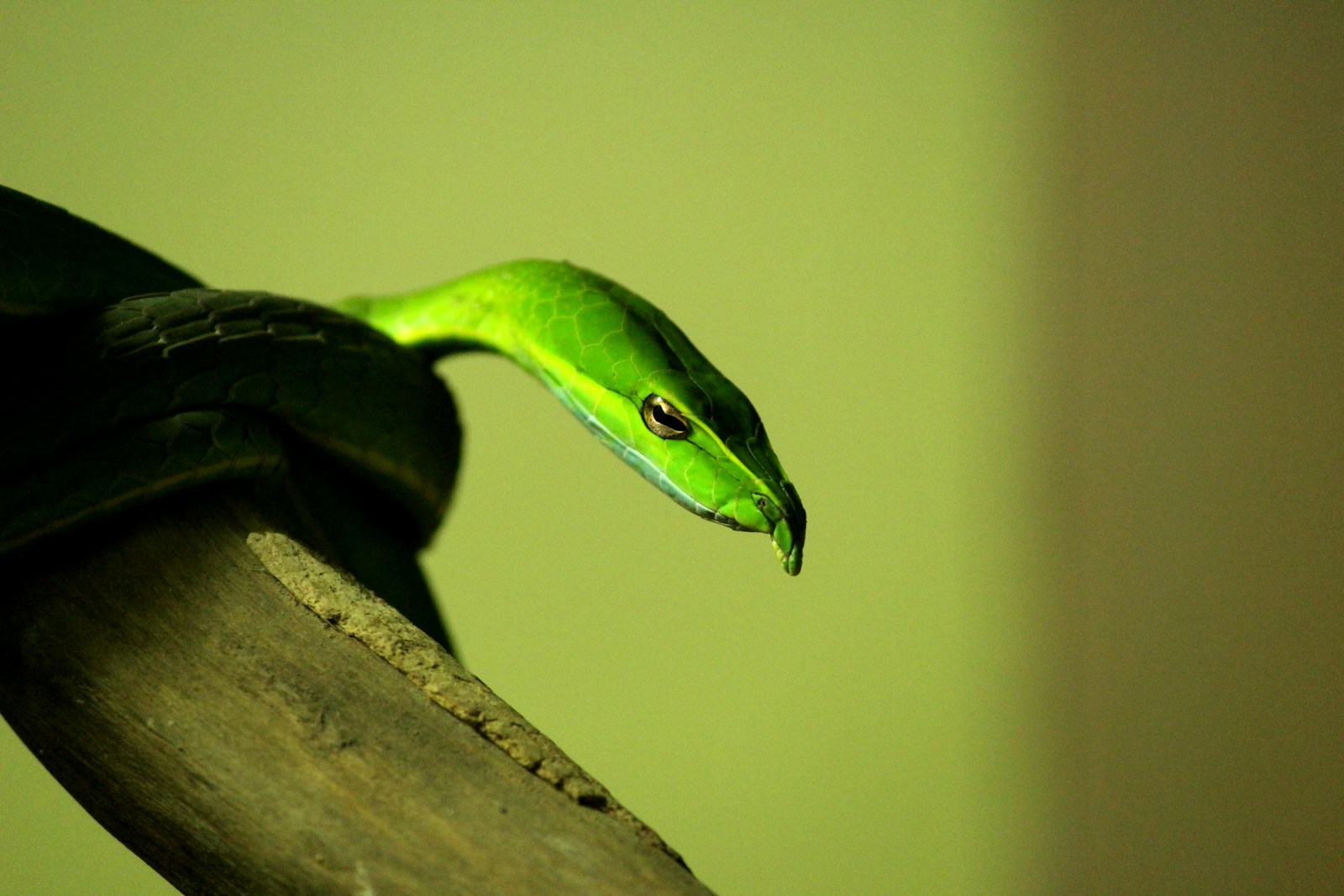In the captivating realm of nature’s predator-prey relationships, few hunting strategies are as ingenious as those employed by certain snake species that use flowers as their hunting grounds. Among these remarkable reptiles is the vine snake, a master of disguise that conceals itself within colorful blooms to ambush unsuspecting pollinators. This fascinating evolutionary adaptation represents one of nature’s most elegant examples of specialized predation. As insects flit from flower to flower in search of nectar, they remain oblivious to the patient predator that waits motionless, perfectly camouflaged, ready to strike with lightning speed. Let’s explore this remarkable hunting strategy and the snakes that have perfected it.
The Remarkable Vine Snake: Nature’s Floral Ambush Predator
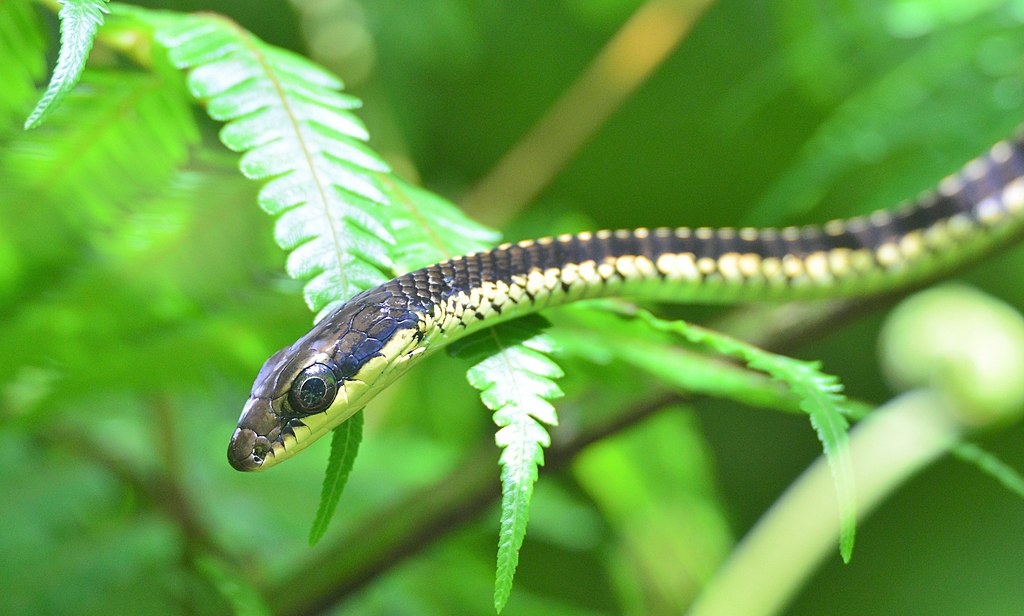
The vine snake (Ahaetulla genus) represents one of the most specialized flower-ambushing predators in the reptile world. These slender, elongated snakes possess remarkably thin bodies that can easily blend with stems and vines in their tropical forest habitats across parts of Asia and Africa. Their most distinctive feature is their pointed, vine-like snout that extends well beyond their mouth, creating a perfect mimicry of plant structures. When positioned among flower clusters, these snakes become virtually invisible to both prey and potential predators. Their specialized anatomy, including horizontally elongated pupils and binocular vision, allows them to accurately judge distances when striking at small, fast-moving pollinators that visit blooms.
Evolutionary Adaptations for Floral Camouflage
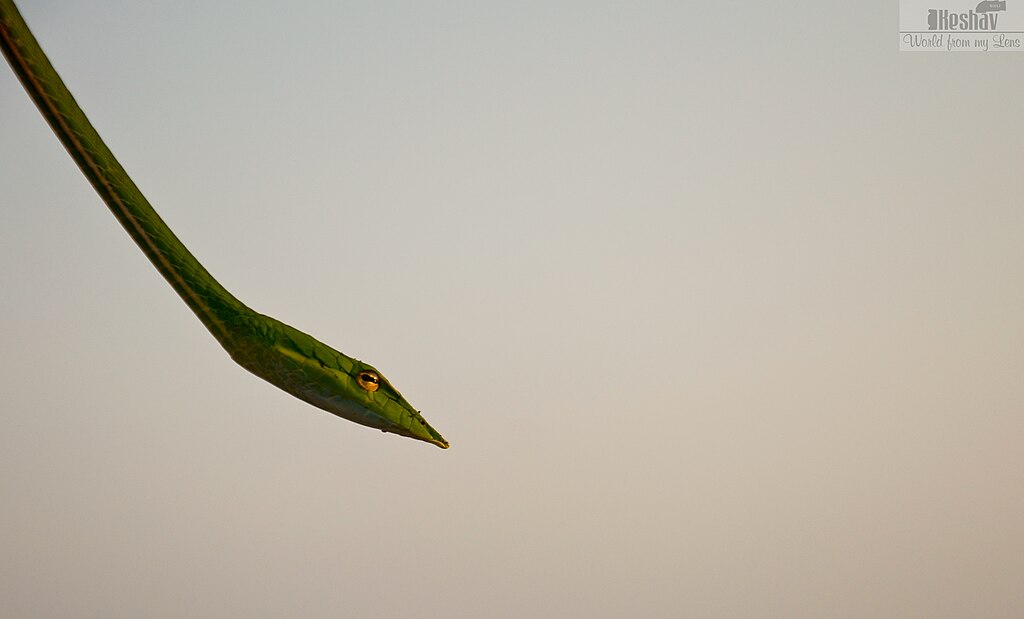
The vine snake’s body represents a marvel of evolutionary adaptation specifically suited for its flower-ambushing lifestyle. Their vibrant green coloration (though some species display brown or reddish hues) perfectly matches the surrounding vegetation, creating a seamless blend with their environment. Their extremely thin, elongated body can stretch along slender branches without causing noticeable movement or disturbance to the surrounding plant structure. Some species possess remarkable scale patterns that mimic the texture of plant stems or leaf veins, further enhancing their disguise. Perhaps most impressive is their ability to remain perfectly motionless for extended periods, sometimes swaying gently to mimic a branch moving in the breeze, a behavior that has evolved specifically to prevent detection by both prey and potential predators.
The Perfect Hunting Strategy: Patience and Precision
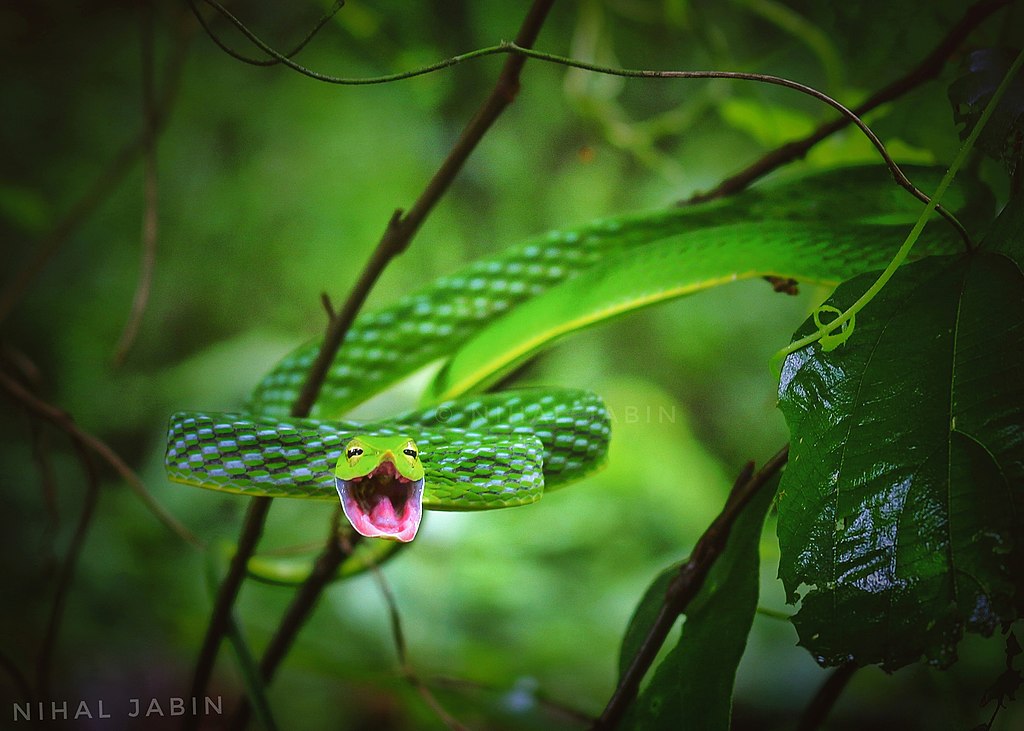
The flower-ambushing technique employed by vine snakes represents one of nature’s most refined hunting strategies. Unlike active hunters that pursue their prey, these specialized predators rely entirely on stealth and patience, sometimes remaining motionless for hours waiting for the perfect opportunity. When a pollinator such as a butterfly, bee, or small bird approaches the flower, the snake remains completely still until the prey is within striking distance. Using their exceptional depth perception and binocular vision, they calculate the precise moment to strike with remarkable accuracy. The attack itself happens with such incredible speed that it’s nearly impossible for the prey to react. Studies have shown that vine snakes can strike in less than 0.2 seconds, making their attacks among the fastest in the snake world.
Specialized Venom Delivery System

Vine snakes possess a specialized venom delivery system perfectly adapted for their unique hunting style. Unlike many venomous snakes with front-positioned fangs, vine snakes are opisthoglyphous, meaning they have enlarged, grooved teeth positioned toward the rear of their upper jaw. This adaptation allows them to effectively inject venom into small prey caught among tight flower clusters. Their venom is primarily hemotoxic, designed to quickly immobilize small prey rather than for defense against larger animals. The toxin acts rapidly on the small bodies of insects and hummingbirds, preventing escape while the snake maneuvers to consume its meal. Interestingly, while potent enough to quickly subdue their tiny prey, the venom generally poses minimal danger to humans, causing only local swelling and discomfort if a bite occurs.
Targeting Specific Flower Species
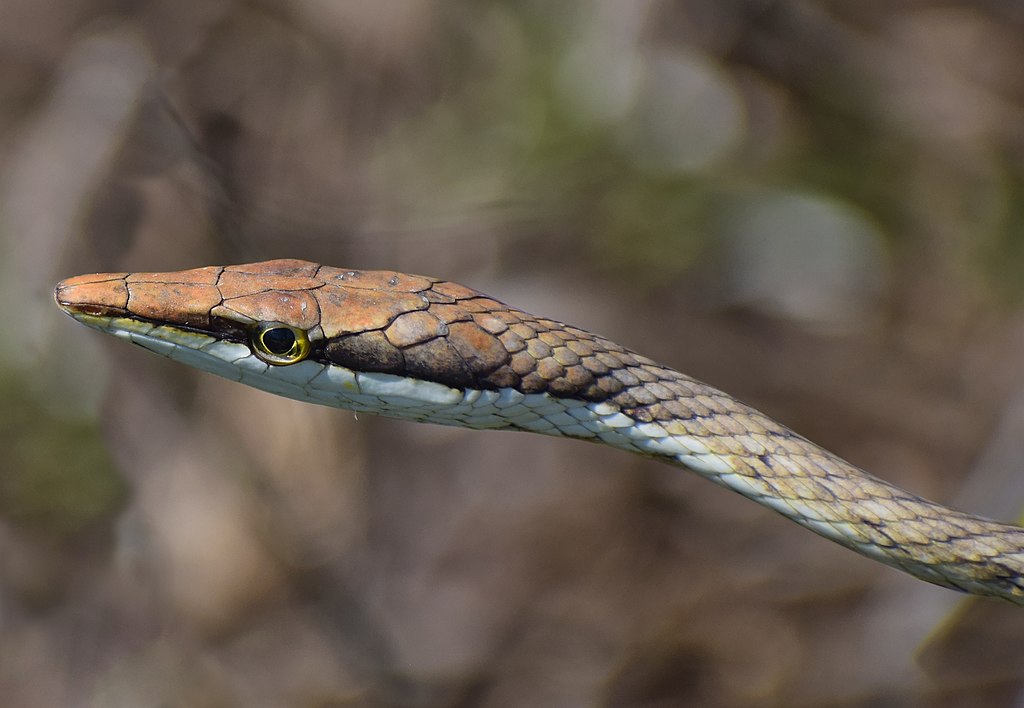
Research has revealed that vine snakes don’t randomly select flowers for their ambush sites but instead show preferences for specific blooms that attract their preferred prey. Many species favor flowers with bright colors that attract pollinators such as butterflies and small nectarivorous birds. Certain vine snake species in Southeast Asia demonstrate a particular preference for orchids and similar exotic blooms that attract larger insects and occasional hummingbirds. In studies conducted in the rainforests of India, researchers documented Asian vine snakes (Ahaetulla nasuta) specifically positioning themselves among bright red heliconia flowers, which are frequently visited by sunbirds and butterflies. This selective behavior indicates a sophisticated ecological understanding that has evolved over millions of years as these predators refined their hunting strategies.
The Asian Vine Snake: Master of Floral Disguise
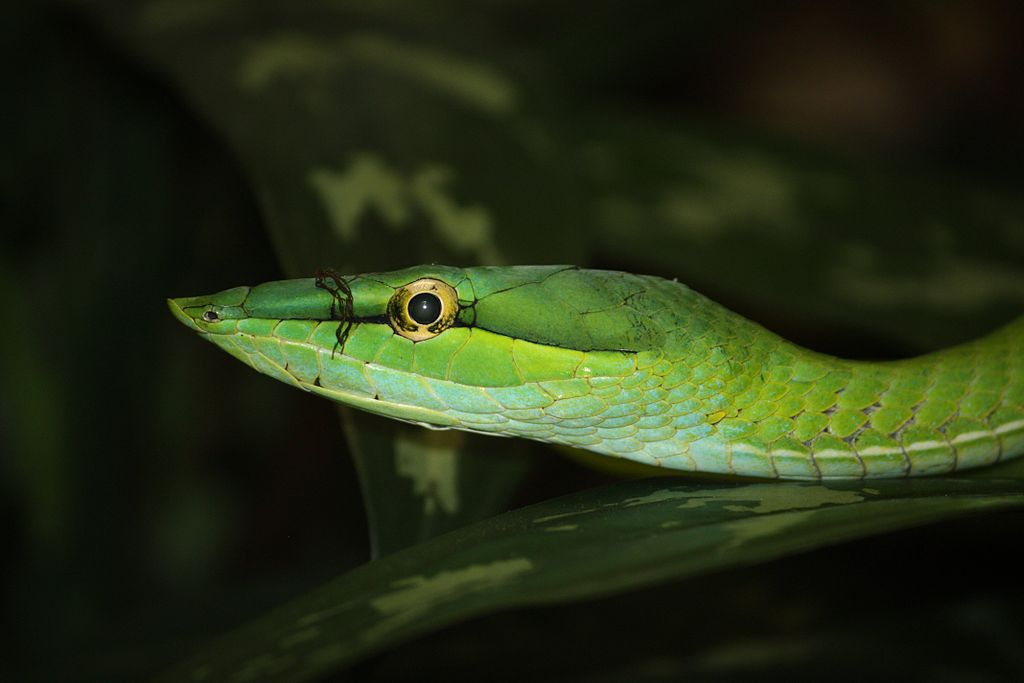
The Asian vine snake (Ahaetulla nasuta), also known as the long-nosed whip snake, represents perhaps the most specialized flower-ambushing species. Native to the tropical regions of South and Southeast Asia, this remarkable reptile can reach lengths of up to 6 feet, though its body remains pencil-thin throughout. Its extraordinary head shape features an elongated snout that extends well beyond its mouth, creating a perfect mimic of a vine tendril or plant stem. When hunting, this snake positions itself with its head and neck mimicking a flower stem, while its body remains hidden among leaves and branches. Most notably, these snakes possess incredible control over their body positioning, able to hold the front third of their body completely straight and motionless for hours while waiting for prey, a posture almost unheard of among other snake species.
The African Vine Snake’s Unique Adaptations

The African vine snake (Thelotornis kirtlandii), also known as the bird snake, employs similar flower-ambushing techniques but with distinctive adaptations suited to its specific habitat. These slender predators possess remarkable cryptic coloration that can shift subtly to match their surroundings, ranging from gray-brown to olive green. Their most unusual feature is their ability to inflate their throat and neck vertically when threatened, transforming their narrow profile into a seemingly larger, more intimidating shape. When hunting among flower clusters in the forests of central and eastern Africa, these snakes often position themselves with their head pointing downward, creating a perfect mimic of a hanging vine or stem. Research has documented these snakes specifically targeting sunbird and honeyeater feeding territories, positioning themselves among the flowers these birds frequently visit.
The Specialized Diet of Flower-Ambushing Snakes

The diet of flower-ambushing vine snakes is highly specialized and directly tied to their unique hunting strategy. While many snake species feed primarily on rodents or other reptiles, vine snakes have evolved to target the creatures attracted to flowers. Their primary prey includes butterflies, large insects, small birds (particularly hummingbirds and sunbirds), lizards, and occasionally small frogs that may visit flowers. Ornithologists studying hummingbird populations in Central America have documented significant predation by vine snakes positioned among tropical flowers, particularly during breeding seasons when the birds are most active. The Asian vine snake shows particular specialization in butterfly consumption, with some individuals becoming so adept at capturing these insects that they can make up over 70% of their diet according to stomach content analyses conducted by herpetologists.
Timing the Perfect Ambush
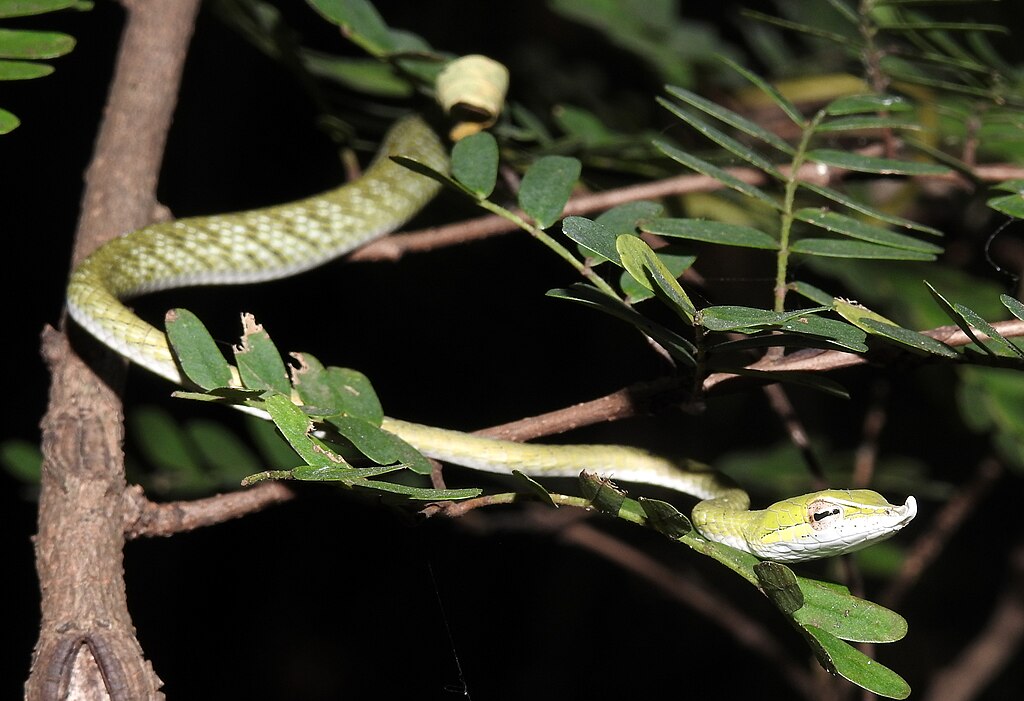
The timing of ambush attacks by flower-hiding snakes reveals remarkable synchronization with pollinator activity patterns. These specialized predators have evolved behavioral patterns that align perfectly with the peak activity times of their intended prey. Many vine snake species show increased hunting activity during early morning and late afternoon hours when insect pollinators are most active. In tropical regions, researchers have observed that vine snakes position themselves among flowers just before dawn, remaining perfectly still throughout the morning hours when butterflies and hummingbirds are feeding most actively. Through radiotelemetry studies tracking vine snake movements, scientists have discovered that some individuals return to the same productive flower patches repeatedly, demonstrating a sophisticated understanding of resource patterns in their environment.
Evolutionary Arms Race with Pollinators
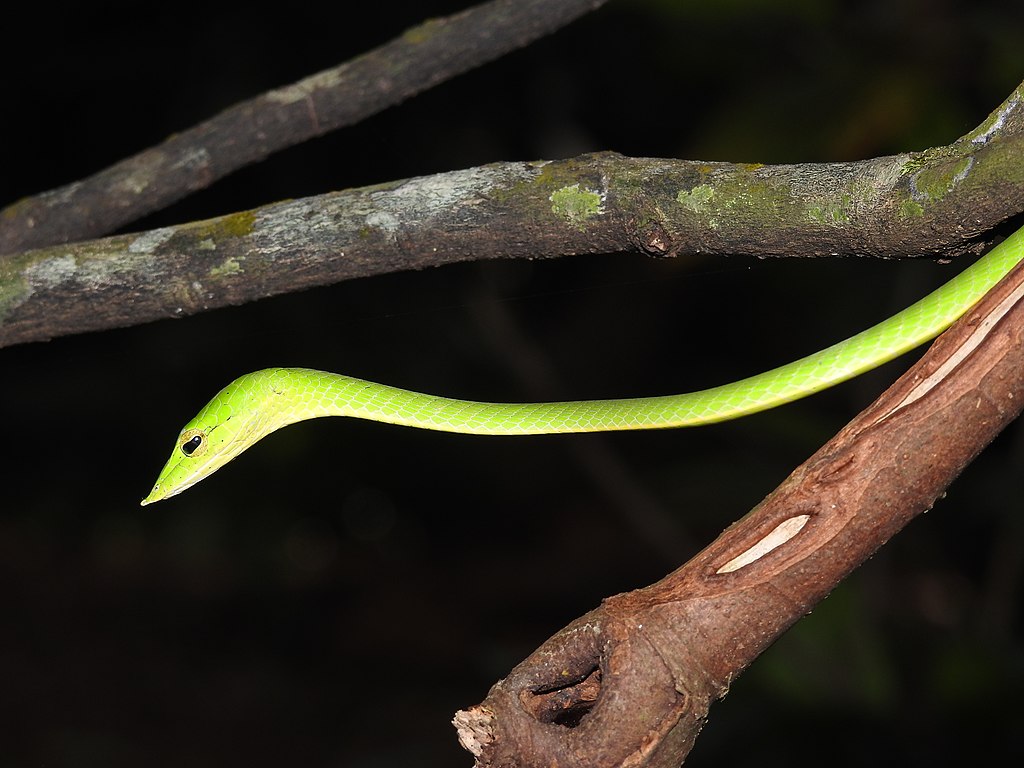
The relationship between flower-ambushing snakes and their pollinator prey represents a classic evolutionary arms race that has developed over millions of years. As vine snakes perfected their camouflage and ambush techniques, their prey species evolved increasingly sophisticated detection abilities and avoidance behaviors. Some butterfly species, particularly in regions with high vine snake populations, demonstrate “inspection behaviors,” hovering briefly before landing on flowers to visually check for predators. Certain hummingbird species exhibit distinctive approach patterns when visiting flowers in areas where vine snakes are common, darting quickly and unpredictably rather than hovering steadily. Studies in the Amazon basin have documented that some butterfly species avoid certain flower shapes altogether in areas with high concentrations of flower-ambushing snakes, suggesting evolutionary pressure has shaped not just behaviors but actual resource selection patterns.
Conservation Challenges for Specialized Predators
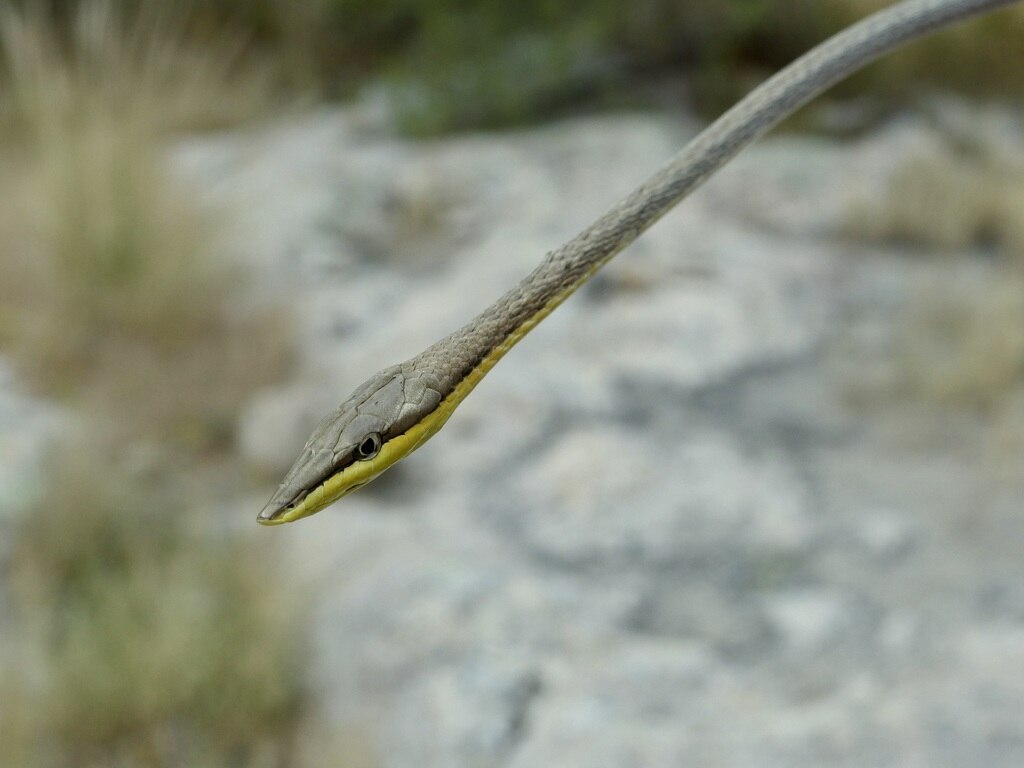
The highly specialized nature of flower-ambushing snakes makes them particularly vulnerable to habitat disruption and environmental changes. As specialized predators dependent on specific ecological conditions, these snakes face significant threats from deforestation and habitat fragmentation throughout their ranges. Their reliance on particular flowering plants and the pollinators that visit them creates a complex ecological dependency that can be easily disrupted. Climate change poses additional challenges, as shifts in flowering times and pollinator activity patterns can create misalignment between predator and prey availability. Conservation efforts for these remarkable snakes must focus on preserving entire ecological communities rather than just the species themselves, highlighting the importance of understanding these complex ecological relationships for effective conservation planning.
Cultural Significance and Human Interactions

Throughout their range, flower-ambushing vine snakes have earned distinctive places in local cultures and folklore. In parts of Southeast Asia, the Asian vine snake is often viewed as a guardian of gardens, with some local traditions considering their presence beneficial for controlling insect populations. Among certain indigenous communities in Central Africa, the vine snake’s remarkable camouflage abilities have made it a symbol of patience and strategic thinking, featured in traditional stories that teach hunting techniques. Despite their venomous nature, these snakes rarely pose significant danger to humans due to their shy disposition and specialized rear-fanged venom delivery system. However, habitat encroachment has increased human-snake encounters in some regions, leading to educational efforts aimed at teaching local communities about these remarkable predators and their ecological importance.
Studying Nature’s Perfect Ambush Predator

Research on flower-ambushing snakes presents unique challenges that have required innovative scientific approaches. Their cryptic nature and perfect camouflage make traditional observational studies extremely difficult, with researchers often spending hundreds of hours watching seemingly empty flower clusters before witnessing a successful predation event. Modern research techniques including high-speed videography have revealed the remarkable precision of their strikes, documenting attack speeds that rank among the fastest in the animal kingdom. Some researchers have pioneered the use of specialized infrared cameras that can detect the slightly elevated body temperature of the snake against the cooler flower background, allowing for more effective field observations. Advances in genetic analysis have also helped scientists better understand the evolutionary relationships between different vine snake species and how their specialized hunting strategies developed independently in different regions.
The flower-ambushing strategy employed by vine snakes represents one of nature’s most elegant examples of evolutionary specialization. These remarkable reptiles have perfected the art of patience and disguise, turning beautiful blooms into deadly traps for unsuspecting pollinators. Their specialized anatomy, behavior, and hunting techniques highlight the incredible adaptability of life on our planet and the complex ecological relationships that develop over evolutionary time. As we continue to study these fascinating predators, they offer valuable insights into the intricate connections between species and the remarkable adaptations that emerge through natural selection. The vine snake’s story reminds us that even in nature’s most beautiful settings, complex dramas of survival unfold constantly, often hidden in plain sight among the very flowers we admire.

